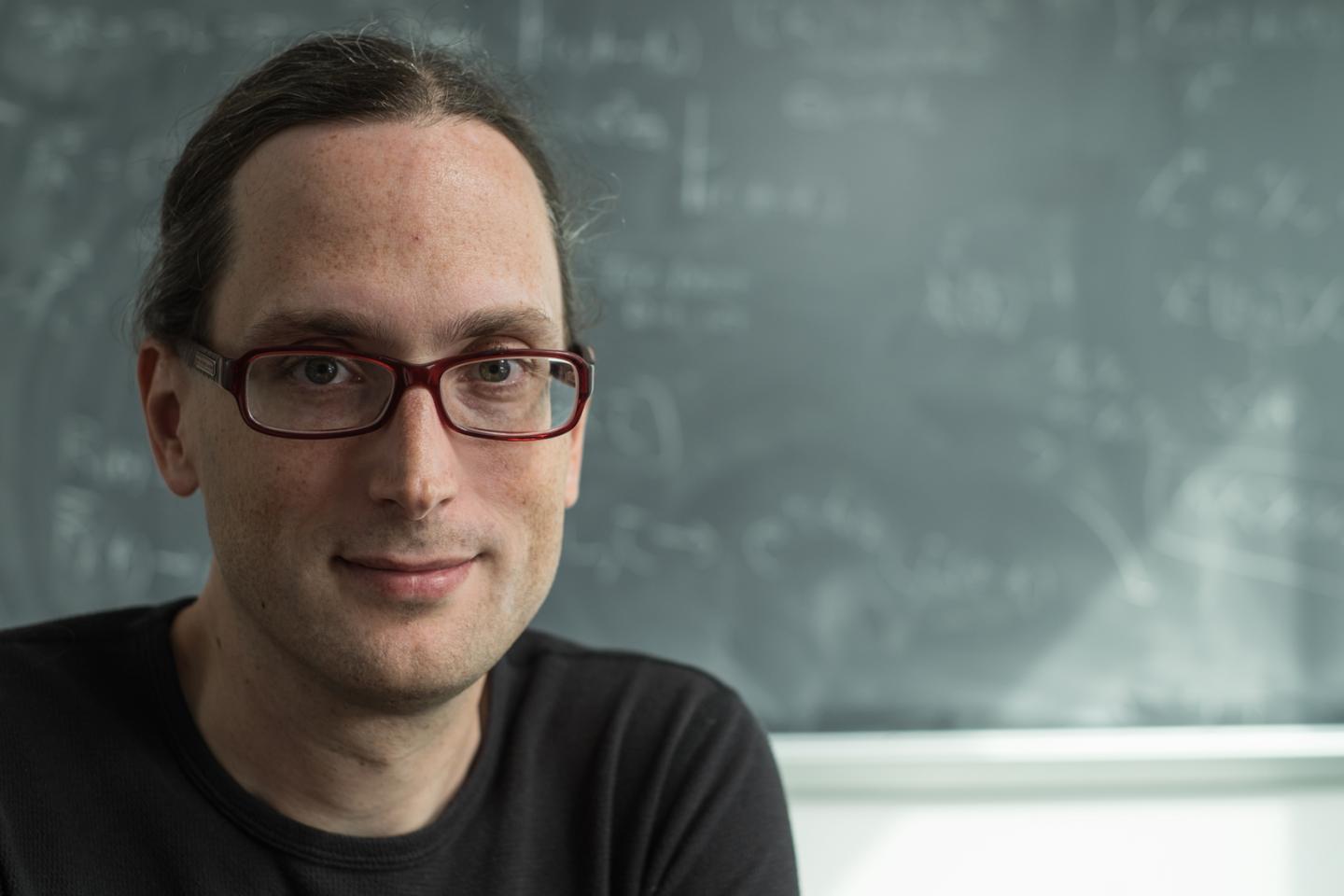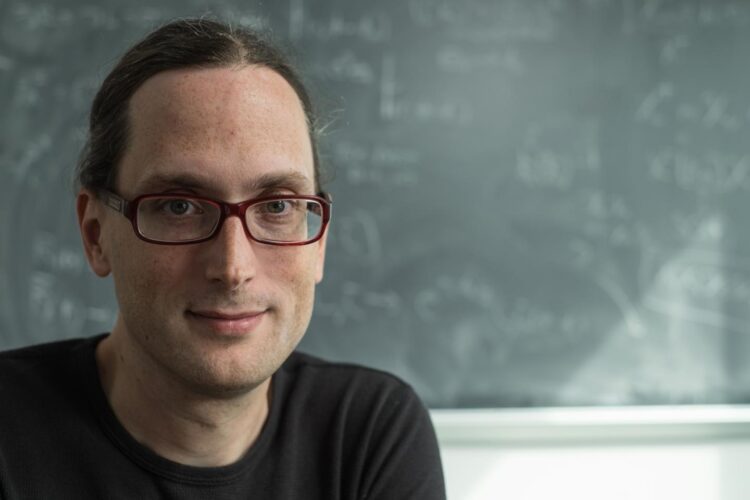2D order protects several entangled states that could be used in quantum computing

Credit: Jeff Fitlow/Rice University
HOUSTON — (May 18, 2020) — U.S. and German physicists have found surprising evidence that one of the most famous phenomena in modern physics — the quantum Hall effect — is “reincarnated” in topological superconductors that could be used to build fault-tolerant quantum computers.
The 1980 discovery of the quantum Hall effect kicked off the study of topological orders, electronic states with “protected” patterns of long-range quantum entanglement that are remarkably robust. The stability of these protected states is extremely attractive for quantum computing, which uses quantum entanglement to store and process information.
In a study published online this month in Physical Review X (PRX), theoretical physicists from Rice University, the University of California, Berkeley (UC Berkeley), and the Karlsruhe Institute of Technology (KIT) in Karlsruhe, Germany, presented strong numerical evidence for a surprising link between 2D and 3D phases of topological matter. The quantum Hall effect was discovered in 2D materials, and laboratories worldwide are in a race to make 3D topological superconductors for quantum computing.
“In this work we’ve shown that a particular class of 3D topological superconductors should exhibit ‘energy stacks’ of 2D electronic states at their surfaces,” said Rice co-author Matthew Foster, an associate professor of physics and astronomy and member of the Rice Center for Quantum Materials (RCQM). “Each of these stacked states is a robust ‘reincarnation’ of a single, very special state that occurs in the 2D quantum Hall effect.”
The quantum Hall effect was first measured in two-dimensional materials. Foster uses a “percolation” analogy to help visualize the strange similarities between what occurs in 2D quantum Hall experiments and the study’s 3D computational models.
“Picture a sheet of paper with a map of rugged peaks and valleys, and then imagine what happens as you fill that landscape with water,” he said. “The water is our electrons, and when the level of fluid is low, you just have isolated lakes of electrons. The lakes are disconnected from one another, and the electrons can’t conduct across the bulk. If water level is high, you have isolated islands, and in this case the islands are like the electrons, and you also don’t get bulk conduction.”
In Foster’s analogy the rugged landscape is the electric potential of the 2D material, and the level of ruggedness corresponds to amount of impurities in the system. The water level represents the “Fermi energy,” a concept in physics that refers to the filling level of electrons in a system. The edges of the paper map are analogous to the 1D edges that surround the 2D material.
“If you add water and tune the fluid level precisely to the point where you have little bridges of water connecting the lakes and little bridges of land connecting the islands, then it’s as easy to travel by water or land,” Foster said. “That is the percolation threshold, which corresponds to the transition between topological states in quantum Hall. This is the special 2D state in quantum Hall.
“If you increase the fluid level more, now the electrons are trapped in isolated islands, and you’d think, ‘Well, I have the same situation I had before, with no conduction.’ But, at the special transition, one of the electronic states has peeled away to the edge. Adding more fluid doesn’t remove the edge state, which can go around the whole sample, and nothing can stop it.”
The analogy describes the relationship between robust edge conduction and bulk fine-tuning through the special transition in the quantum Hall effect. In the PRX study, Foster and co-authors Bjo?rn Sbierski of UC Berkeley and Jonas Karcher of KIT studied 3D topological systems that are similar to the 2D landscapes in the analogy.
“The interesting stuff in these 3D systems is also only happening at the boundary,” Foster said. “But now our boundaries aren’t 1D edge states, they are 2D surfaces.”
Using “brute-force numerical calculations of the surface states,” Sbierski, Karcher and Foster found a link between the critical 2D quantum Hall state and the 3D systems. Like the 1D edge state that persists above the transition energy in 2D quantum Hall materials, the calculations revealed a persistent 2D boundary state in the 3D systems. And not just any 2D state; it is exactly the same 2D percolation state that gives rise to 1D quantum Hall edge states.
“What was a fine-tuned topological quantum phase transition in 2D has been ‘reincarnated’ as the generic surface state for a higher dimensional bulk,” Foster said. “In 2018 study, my group identified an analogous connection between a different, more exotic type of 2D quantum Hall effect and the surface states of another class of 3D topological superconductors. With this new evidence, we are now confident there is a deep topological reason for these connections, but at the moment the mathematics remain obscure.”
Topological superconductors have yet to be realized experimentally, but physicists are trying to create them by adding impurities to topological insulators. This process, known as doping, has been widely used to make other types of unconventional superconductors from bulk insulators.
“We now have evidence that three of the five 3D topological phases are tied to 2D phases that are versions of the quantum Hall effect, and all three 3D phases could be realized in ‘topological superconductors,'” Foster said.
Foster said conventional wisdom in condensed matter physics has been that topological superconductors would each host only one protected 2D surface state and all other states would be adversely affected by unavoidable imperfections in the solid-state materials used to make the superconductors.
But Sbierski, Karcher and Foster’s calculations suggest that isn’t the case.
“In quantum Hall, you can tune anywhere and still get this robust plateau in conductance, due to the 1D edge states,” Foster said. “Our work suggests that is also the case in 3D. We see stacks of critical states at different energy levels, and all of them are protected by this strange reincarnation of the 2D quantum Hall transition state.”
The authors also set the stage for experimental work to verify their findings, working out details of how the surface states of the 3D phases should appear in various experimental probes.
“We provide precise statistical ‘fingerprints’ for the surface states of the topological phases,” Foster said. “The actual wave functions are random, due to disorder, but their distributions are universal and match the quantum Hall transition.”
###
The research was supported by a National Science Foundation CAREER grant (1552327), the German National Academy of Sciences Leopoldina (LPDS 2018-12), a KIT research travel grant, German state graduate funding and the UC Berkeley Library’s Berkeley Research Impact Initiative.
RCQM leverages global partnerships and the strengths of more than 20 Rice research groups to address questions related to quantum materials. RCQM is supported by Rice’s offices of the provost and the vice provost for research, the Wiess School of Natural Sciences, the Brown School of Engineering, the Smalley-Curl Institute and the departments of Physics and Astronomy, Electrical and Computer Engineering, and Materials Science and NanoEngineering.
Links and resources:
The DOI of the Physical Review X paper is: 10.1103/PhysRevX.10.021025
A copy of the PRX paper is available at: https:/
High-resolution IMAGES are available for download at:
https:/
CAPTION: Matthew Foster (Photo by Jeff Fitlow/Rice University)
https:/
CAPTION: The rugged landscapes in these illustrations depict the electric potential on the surface of 2D materials that exhibit the quantum Hall effect. The level of ruggedness corresponds to impurities in the system, and the water level represents the “Fermi energy,” or filling level of electrons. In the quantum Hall effect (left), the percolation threshold (middle) is a fine-tuned energy state that marks the transition to topological order. New research by physicists at Rice University, the University of California Berkeley and the Karlsruhe Institute of Technology has found “stacks” of this special 2D state that protect patterns of quantum entanglement (right) throughout the surface energy spectrum of 3D topological materials. (Graphic courtesy of M. Foster/Rice University)
This release can be found online at news.rice.edu.
Follow Rice News and Media Relations via Twitter @RiceUNews.
Located on a 300-acre forested campus in Houston, Rice University is consistently ranked among the nation’s top 20 universities by U.S. News & World Report. Rice has highly respected schools of Architecture, Business, Continuing Studies, Engineering, Humanities, Music, Natural Sciences and Social Sciences and is home to the Baker Institute for Public Policy. With 3,962 undergraduates and 3,027 graduate students, Rice’s undergraduate student-to-faculty ratio is just under 6-to-1. Its residential college system builds close-knit communities and lifelong friendships, just one reason why Rice is ranked No. 1 for lots of race/class interaction and No. 4 for quality of life by the Princeton Review. Rice is also rated as a best value among private universities by Kiplinger’s Personal Finance.
Media Contact
Jade Boyd
[email protected]
Related Journal Article
http://dx.





